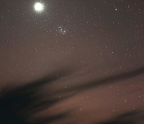Arecibo’s legacy

DISASTERS SUCH AS EARTHQUAKES AND HURRICANES are common in Puerto Rico. Only about 180 by 60 kilometres in extent, the small island lies 1,600 kilometres southeast of Miami, far from any major landmass. The Atlantic Ocean beats against its northern shores, and the placid Caribbean strokes its southern coast. Despite the dangers, Puerto Rico is a popular tourist destination and home to 3.2 million US citizens, a resilient and diverse population long proud of the world-famous 305-metre-wide radio telescope at Arecibo Observatory.
But at 7:00am on December 1, 2020, their resilience was severely tested. At that moment the support cables above the dish snapped, and the 900-ton antenna platform suspended above the dish plummeted into it in a mangled mass of steel. The crash triggered a nearby seismograph accustomed to recording small (and some not so small) earthquakes from the collision between tectonic plates in the region.
Senior telescope operator Israel Cabrera was a witness. “I do not have the right words to explain my pain when the platform collapsed,” he recalls. “Just to hear the cable threads ripping like gun shots and see the platform coming down — it was a lot to take.” He and other staff members watching all started to cry. They had dreaded this moment. “I feel this loss in [a] very emotional way,” says Cabrera. “Now, just looking every time I come to work, I can see the ghost of the platform, but it is not there anymore.”
Planetary scientist Edgard Rivera-Valentín was born in Puerto Rico and had been an integral part of the observatory scientific staff. He emphasises that the loss isn’t merely scientific. “It is cultural. Over the past 57 years, the telescope has woven itself into the Puerto Rican culture and has become
You’re reading a preview, subscribe to read more.
Start your free 30 days



